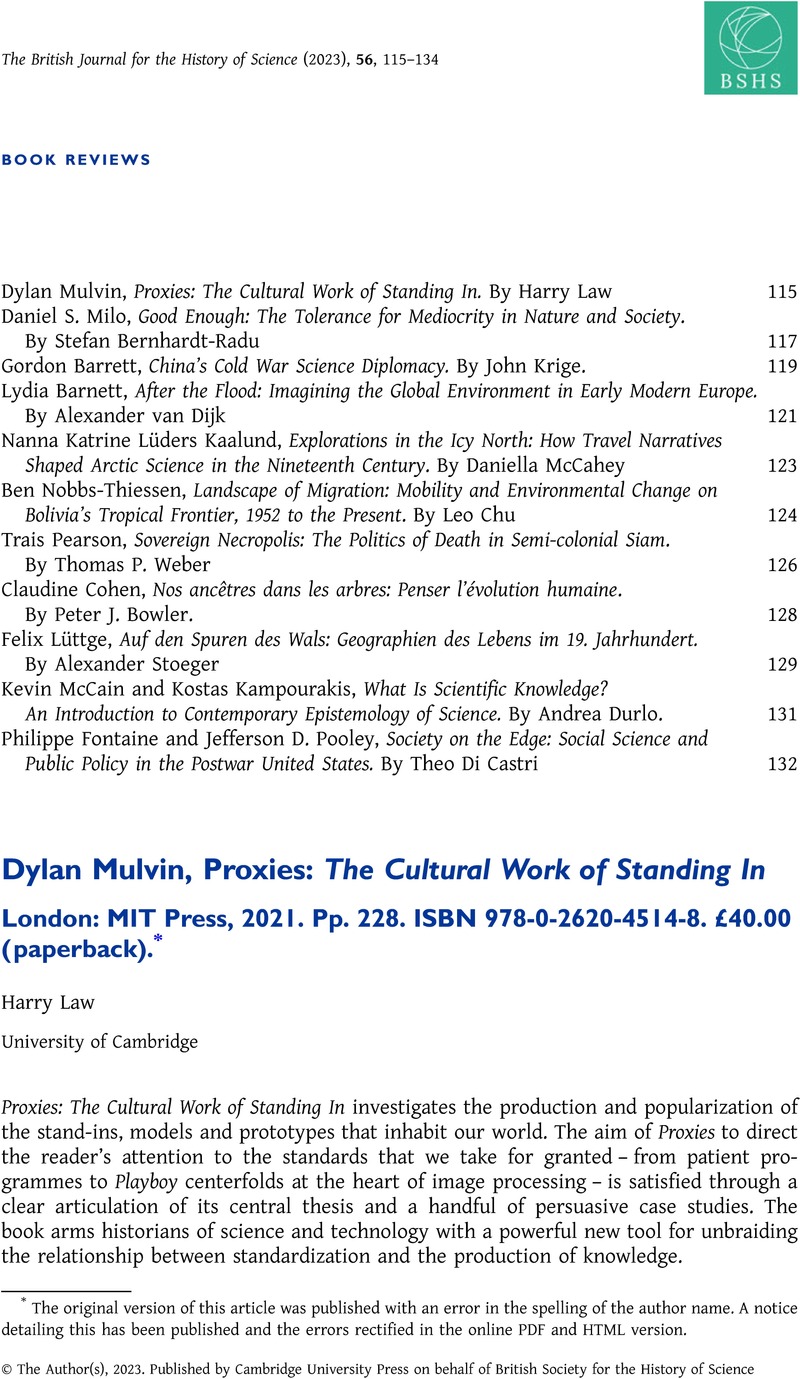Crossref Citations
This article has been cited by the following publications. This list is generated based on data provided by Crossref.
Law, Harry
2023.
Dylan Mulvin, Proxies: The Cultural Work of Standing In London: MIT Press, 2021. Pp. 228. ISBN 978-0-2620-4514-8. £40.00 (paperback). – CORRIGENDUM.
The British Journal for the History of Science,
Vol. 56,
Issue. 2,
p.
281.




